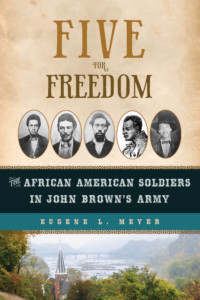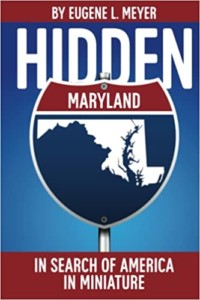“Bigger than Watergate”
“Bigger than Watergate!”
The Watergate scandal and the Washington Post reporting (thanks. Bob and Carl) that brought down a president seemed like the apex of journalistic enterprise and achievement in the 1970s.
It introduced the -gate suffix into the lexicon. There was Koreagate, a 1976 political scandal over allegations that Korean figures were trying to influence Democratic members of Congress, and lots of other gates that escape memory.
But the suffix would survive well into the Trump years. Recall “Pizzagate,” the Q-Anon fueled conspiracy that Democratic pedophiles were performing their sick perversions in the basement of a pizza joint a few doors from Politics and Prose, the iconic indie bookstore in Northwest DC.
In the real world, Watergate had set a very high, almost an impossibly high bar for investigative reporters who could only publish in its shadow. But really, what could be bigger than Watergate? In the wake of the original -gate scandal, Watergate as a metaphor was used by multiple sources to establish their credibility and the importance of whatever story they were trying to peddle.
So, one afternoon in 1975 in the Washington Post newsroom, where I occupied a desk in the back row near the library, a potential source came to me with a story. It was not Watergate, it was a family feud that involved allegations of self-dealing, conflicts of interest and worse arising from the estate of a once prominent oil, real estate and gasoline magnate in the DC area.
“This story is bigger than Watergate,” my source, from one side of the family divide, assured me.
But to further whet my appetite, he promised that my publishing the story would make me “more famous than Arthur Brisbane.” That certainly caught my attention. Arthur who? Arthur Brisbane, I learned, was a legendary newspaper editor, who also became famous for his editorials. He had worked for William Randolph Hearst, whose biographer described Brisbane as “a one-time socialist who had drifted pleasantly into the profit system…”
The story my source offered eventually made the front page of the newspaper, below the fold, and came complete with a family tree and a dizzying chart illustrating the tangled family fortune, with all the toward and allegedly untoward family ties to the old man’s estate.
It was an idiosyncratic story, to say the least, the kind of story I relished. Sometimes, I would go to the probate clerk’s office and ask for the thickest file. Invariably, such family feuds opened a window into otherwise unknown aspects of local Washington. But, alas, it was not “bigger than Watergate.”
Flash forward a few years. The Post reporter covering agriculture, the inimitable Ward Sinclair, a wonderful stylist, reporter, and contrarian, and just a great person to know, decided to decamp to a farm he’d bought in southwestern Pennsylvania. There he and his partner, later wife, Cass Peterson, grew crops they would deliver to the Post newsroom and to area farmers markets and even to Nora’s, a fancy DC restaurant. Their little Flickerville Mountain and Ground Hog Ranch in tiny Dott, Pa. would now be called a CSA (Community Supported Agriculture), but back then, in 1988, it was just a good and novel Plan B for Ward and Cass.
I’d been toiling away as a Post Metro reporter, not unhappy and later to earn the informal title of “Mr. Maryland” but still aspiring to be a “national staff” reporter, a more prestigious position. Bob Kaiser, then the managing editor for national news, was the man to see. Bob said he was looking for coverage “less idiosyncratic” than he thought Ward had produced. Truth be told, though, while he might have written more about people than policy, Ward found a way to do both.
I did not get the job. The successful candidate was Art Brisbane (full name Arthur Brisbane III), grandson of the legendary editor who I was supposed to become more famous than, due to the story that I was assured was “bigger than Watergate.”
Art Brisbane, descended from newspaper royalty, was a pleasant guy, but he wasn’t long on the national ag beat, more of a drive by, as we described those who quickly came and went, destined to rise in the hierarchy of the business.
He had come from the Kansas City Times in 1984 and paid his dues at the Post, covering D.C. government and working as an assistant city editor before ascending to National in Ward’s old job in 1989. But in 1990, less than a year into the ag beat, Art returned to KC, this time to work for The Star, where he rose quickly from columnist to the paper’s top editor, in 1992, and, in 1997, became its publisher.
In January 2005 he left KC for California, where for 18 months he was senior vice president of the Knight Ridder newspaper chain. From August 2010 to September 2012, he was the “public editor” at The New York Times, reporting and writing about the paper’s alleged miscues.
After bouncing around for a few more years in other positions, including as the owner of ASB Consulting LLC, in January 2021 he became a fulltime “retired guy,” according to his LinkedIn profile.
I wish Art all the best in retirement. As for me, even though my source claimed his story was “bigger than Watergate,” it wasn’t, and I never did become “more famous than Arthur Brisbane.”
Five for Freedom hits the airwaves…
On Monday, Feb. 5, at 9:05 a.m., I will be a guest on Eastern Panhandle Talk Radio, WRNR, Martinsburg, West Virginia, co-hosted by best-selling author John Gilstrap and Admiral Bill Stubblefield (Ret.). On the website, you can click on listen live! We will be discussing my book Five for Freedom: The African American Soldiers in John Brown’s Army, relevant anytime, not just during Black History Month, because, always, Black History is American History. Five for Freedom is currently available at a 33% discount off list price on Amazon.
It’s the story of five brave men who went to Harper’s Ferry in October 1859 with abolitionist John Brown to seize the federal arsenal and try to incite a slave insurrection. We will talk about how I came to the story and was able to reveal, through archival research and interviews with descendants, the dramatic lives of the men and the aftermath down to the present.

Published June 2018 by Lawrence Hill Books, an imprint of Chicago Review Press
And lest I forget, there is what was for me a true labor of love: Hidden Maryland: In Search of America in Miniature. My recent book is a collection of columns, features and profiles — updated and illustrated — I wrote for the late, great Maryland Life magazine. It is available in paperback, as an e-book and on audio. I’ve been pleased to share these stories on Zoom and in person. I like to think they are timeless, and I invite you to read and rate them on Amazon.

As usual, interesting and informative. I have bought “Five for Freedom” for half of the people I know. In the interest of full disclosure, at this point in my life, I I probably know only 10 people.